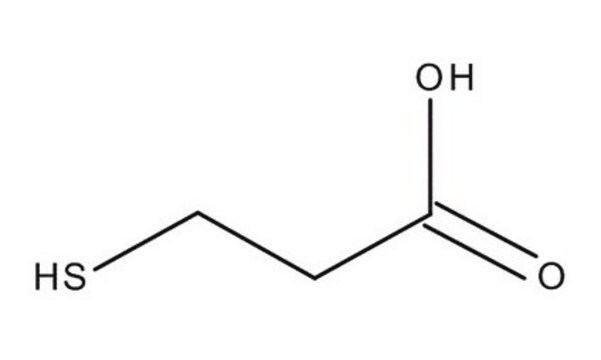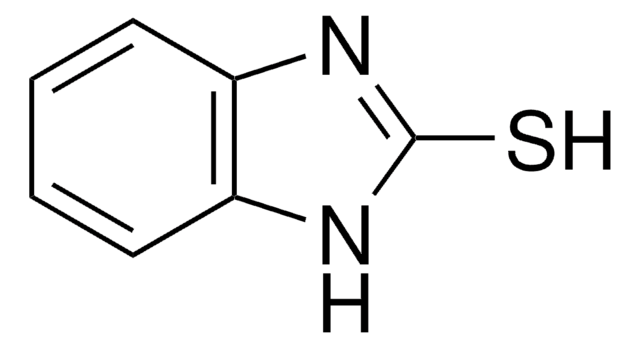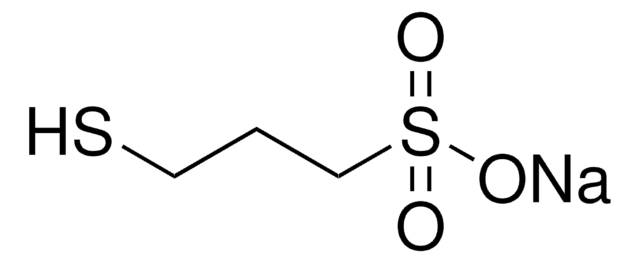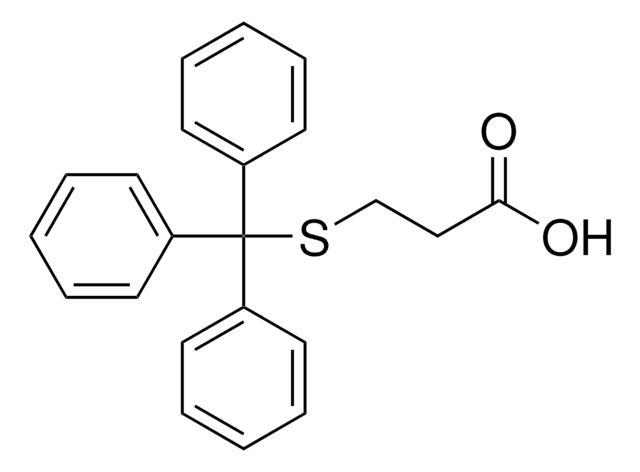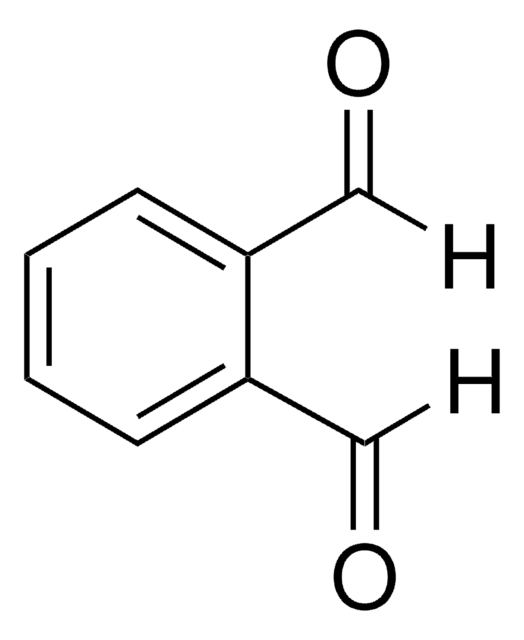Key Documents
M5801
3-Mercaptopropionic acid
≥99%
Synonim(y):
3-sulfanylpropanoic acid
About This Item
Polecane produkty
ciśnienie pary
0.04 mmHg ( 20 °C)
Poziom jakości
Próba
≥99%
Postać
liquid
temp. samozapłonu
662 °F
współczynnik refrakcji
n20/D 1.492 (lit.)
tw
110-111 °C/15 mmHg (lit.)
mp
15-18 °C (lit.)
gęstość
1.218 g/mL at 25 °C (lit.)
ciąg SMILES
OC(=O)CCS
InChI
1S/C3H6O2S/c4-3(5)1-2-6/h6H,1-2H2,(H,4,5)
Klucz InChI
DKIDEFUBRARXTE-UHFFFAOYSA-N
Szukasz podobnych produktów? Odwiedź Przewodnik dotyczący porównywania produktów
Opis ogólny
Zastosowanie
Hasło ostrzegawcze
Danger
Zwroty wskazujące rodzaj zagrożenia
Zwroty wskazujące środki ostrożności
Klasyfikacja zagrożeń
Acute Tox. 3 Oral - Acute Tox. 4 Inhalation - Eye Dam. 1 - Met. Corr. 1 - Skin Corr. 1B
Kod klasy składowania
6.1A - Combustible acute toxic Cat. 1 and 2 / very toxic hazardous materials
Klasa zagrożenia wodnego (WGK)
WGK 1
Temperatura zapłonu (°F)
200.1 °F - closed cup
Temperatura zapłonu (°C)
93.4 °C - closed cup
Środki ochrony indywidualnej
Faceshields, Gloves, Goggles, type ABEK (EN14387) respirator filter
Wybierz jedną z najnowszych wersji:
Certyfikaty analizy (CoA)
Nie widzisz odpowiedniej wersji?
Jeśli potrzebujesz konkretnej wersji, możesz wyszukać konkretny certyfikat według numeru partii lub serii.
Masz już ten produkt?
Dokumenty związane z niedawno zakupionymi produktami zostały zamieszczone w Bibliotece dokumentów.
Klienci oglądali również te produkty
Produkty
Professor Aran (Claremont University, USA) thoroughly discusses the engineering of graphene based materials through careful functionalization of graphene oxide, a solution processable form of graphene.
Nasz zespół naukowców ma doświadczenie we wszystkich obszarach badań, w tym w naukach przyrodniczych, materiałoznawstwie, syntezie chemicznej, chromatografii, analityce i wielu innych dziedzinach.
Skontaktuj się z zespołem ds. pomocy technicznej



